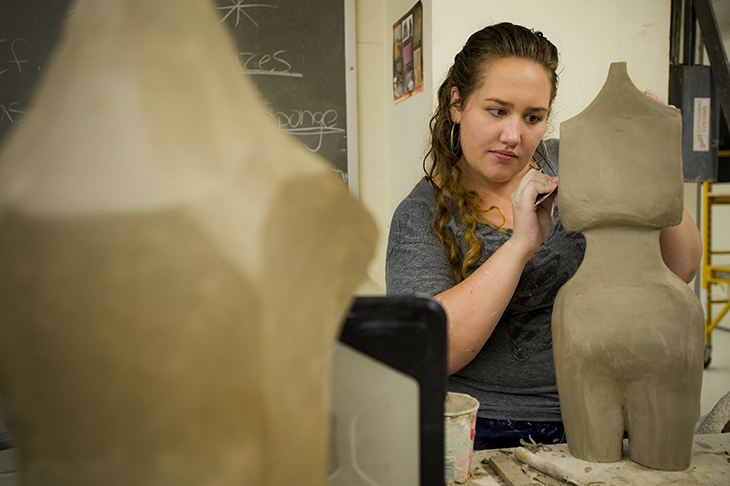
With the hiring of Mary Sheerer in 1894, The Newcomb Art Department became the first liberal arts college in America to offer ceramic art as a significant component within a department of visual art. Alongside the instructional curriculum developed the quasi-commercial entity of Newcomb Pottery, which became internationally famous for the innovative designs and remarkable craftsmanship embodied in the pots. Though Newcomb Pottery ceased operation in the 1940's, the instructional program in ceramics has continued to be one of the finest in the country.
Since 1996, when the Art Department completed a major renovation and expansion of the building, the ceramics area facilities have become outstanding by any measure. Separate air-conditioned teaching studios dedicated to wheel throwing, general construction, plaster working, glazing, clay mixing and firing allow maximum flexibility and access to equipment, with optimal control for health and safety needs. Furnished with modern equipment and safety systems, facilities allow students to make use of virtually any technique or firing range of interest.
Curricular offerings in ceramic include introductory level courses in hand forming and wheel throwing, ARST 1130 and 2130, with attention given to both earthenware and stoneware firing processes. Intermediate and advanced courses include a plaster technology course ARST 2140, advanced wheel throwing ARST 3140, advanced ceramics with glaze technology ARST 3130 and self directed advanced study in ARST 4130 and 4140. Special courses such as Kiln Design and Construction and Ceramic Printmaking are also offered. The curriculum is intended to provide broad and substantial instruction in the major forming and firing methods, while exposing students to a range of aesthetic and conceptual approaches to the field. Advanced students are encouraged to focus in particular areas of interest, and develop a more sophisticated conceptual and aesthetic vocabulary with the material. Both sculptural and vessel oriented inquiries are encouraged.

